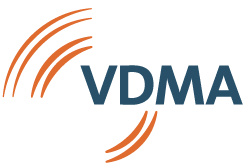For a good year now, many companies have been required to fill out the SCIP database. The obligation stemming from the Chemicals Act refers to the obligations of the REACH Regulation.
In order to offer “newcomers” to the topic of REACH and SCIP the opportunity to obtain basic information on the requirements, an information event was held by VDMA NRW in cooperation with ProduktionNRW on January 27, 2022. The event was specifically aimed at contacts in member companies with little prior knowledge of REACH and SCIP. Technical questions were clarified by VDMA expert Svenja Heinrich from the Environment and Sustainability Department. Among other things, the following points were discussed:
- In the past year, many companies have been dealing with the question of how they can query the required product information in the supply chain and prepare it internally so that it can then be transferred to the SCIP database.
- The obligations to populate the database affect all suppliers of products in the supply chain.
- The SCIP database provides the ability to reference purchased products under their own product. Otherwise, purchased products themselves must be created in the database under their own product.
- There is no legal basis for passing on the SCIP number in the supply chain. On an order confirmation and/or the delivery bill and the invoice no information of the SCIP-relevant information in products must be found in the future. There is no legal basis for passing on the SCIP number in the supply chain. On an order confirmation and/or the delivery bill and the invoice no information of the SCIP-relevant information in products must be found in the future. However, it is definitely an obligation according to Article-33-REACH to inform as soon as a product contains a SVHC substance that exceeds 0.1 mass percent, such as lead. REACH does not specify which format must be used for this purpose. The technical expert used other companies as examples to show how they fulfill their Article 33 information obligations.
- With regard to the information obligations of suppliers to the mechanical engineering sector, there is either a duty to bring or a duty to fetch. A distinction must be made between the requirements of Article 33 REACH and the Chemicals Act (SCIP). If a machine builder does not receive any information from his supplier, he should actively ask. In the case that there is no answer, there is no patent remedy for a course of action so far. It is recommended that in this case one gives assistance to one’s supplier and informs him about the SCIP database and REACH.
- The transfer of very complex, single-unit-produced products to the SCIP database presents challenges for many. The very purpose of the database is unclear to many. For example, it is assumed that the database is intended to serve as a source of information for waste management companies so that they could realize a circular economy through better recyclate qualities in Europe.
- The question of fines must be considered in a differentiated manner. A violation of the information obligation according to Article-33-REACH entails a fine of up to EUR 50,000.
Overall, it became clear that the issues surrounding the SCIP database, which is based on REACH obligations, are detailed and complex. The realization of the information requirements poses challenges for small and medium-sized companies in particular.
Was ist die SCIP Datenbank?
The SCIP database (Substances of Concern In articles as such or in complex objects (Products)) is an electronic database of the European Chemicals Agency (ECHA) that contains information on Substances of Very High Concern (SVHC) in articles or in complex objects. Since January 5, 2021, suppliers of articles as defined by the REACH Regulation must fulfill certain information obligations if, in relation to the article, an SVHC substance is contained in a concentration of more than 0.1 percent by weight. Even though the obligation to fill the database is regulated in the Chemicals Act, the provision of information builds on the information obligations of Article-33 of the REACH Regulation.
Goals of the SCIP database?
The SCIP database is intended to ensure recycling in a few years as part of an improved circular economy, so that information on the presence of substances of very high concern is also provided in the waste phase throughout the life cycle of the products and materials. For each screw or O-ring, no matter how small, it must be known whether the SVHC concentration (for example, lead) exceeds 0.1 percent. If so, the product must be reported in the database. This also places an obligation on suppliers to the mechanical engineering industry to report products.
Organizer
The event was offered by VDMA NRW in cooperation with ProduktionNRW. ProduktionNRW is the competence network of mechanical engineering and production technology in North Rhine-Westphalia and is implemented by VDMA NRW. ProduktionNRW sees itself as a platform for networking, informing and marketing companies, institutions and networks among themselves and along the value chain. Significant parts of the services provided by ProduktionNRW are funded by the European Regional Development Fund (ERDF).
More information
Handouts on SCIP and REACH: https://vdma.org/stoffpolitik


